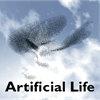社会搜索和资源聚类作为涌现的稳定状态
IF 1.5
4区 计算机科学
Q4 COMPUTER SCIENCE, ARTIFICIAL INTELLIGENCE
引用次数: 0
摘要
社会搜索在各种物种中都有稳定的发展,通常被人类用来寻找资源(如食物、信息、社会伙伴)。反过来,这些资源经常以补丁或集群的形式分布。在当前的工作中,我们使用一个基于生态的智能体模型来研究社会搜索和聚类是否是两者之间动态相互作用的稳定结果。虽然以前的研究已经研究了社会搜索对资源集群的单向影响,反之亦然,但目前的工作调查了它们随着时间的推移而产生的双向互动的结果模式。在我们的模型中,消费者进化了搜索策略(从竞争性到社会性),以适应他们的环境资源结构,而资源的分布(从随机到聚集)是由代理的消费模式塑造的。在四个实验中,我们系统地分析了搜索策略和环境结构对彼此的影响模式,以确定两者的稳定吸引子状态。在实验1中,我们固定了不同层次的资源聚类,观察其对社会搜索的影响;在实验2中,我们观察了社会搜索对资源分布的影响。在这两个实验中,我们发现,增加一个变量的水平会增加另一个变量的水平;然而,当被操纵变量的水平非常高时,因变量趋于下降。最后,在实验3和实验4中,我们研究了资源聚类和社会搜索相互变化和相互影响时的动态,发现低水平的社会搜索和聚类是稳定的吸引状态。我们简单的2D模型产生的结果在质量上与广泛搜索领域(从物理搜索食物到抽象搜索信息)的结果相似,突出了相互作用的消费者/资源系统的一些稳定结果。本文章由计算机程序翻译,如有差异,请以英文原文为准。
Social Search and Resource Clustering as Emergent Stable States
Social search has stably evolved across various species and is often used by humans to search for resources (such as food, information, social partners). In turn, these resources frequently come distributed in patches or clusters. In the current work, we use an ecologically inspired agent-based model to investigate whether social search and clustering are stable outcomes of the dynamical mutual interactions between the two. While previous research has studied unidirectional influences of social search on resource clustering and vice versa, the current work investigates the consequential patterns emerging from their two-way interactions over time. In our model, consumers evolved search strategies (ranging from competitive to social) as adaptations to their environmental resource structures, and resources varied in distributions (ranging from random to clustered) that were shaped by agents’ consumption patterns. Across four experiments, we systematically analyzed the patterns of influence that search strategies and environment structure have on each other to identify stable attractor states of both. In Experiment 1, we fixed resource clustering at various levels and observed its influence on social search, and in Experiment 2, we observed the influence of social search on resource distribution. In both these experiments we found that increasing levels of one variable produced increases in the other; however, at very high levels of the manipulated variable, the dependent variable tended to fall. Finally in Experiments 3 and 4, we studied the dynamics that arose when resource clustering and social search could both change and mutually influence each other, finding that low levels of social search and clustering were stable attractor states. Our simple 2D model yielded results that qualitatively resemble those across a wide range of search domains (from physical search for food to abstract search for information), highlighting some stable outcomes of mutually interacting consumer/resource systems.
求助全文
通过发布文献求助,成功后即可免费获取论文全文。
去求助
来源期刊

Artificial Life
工程技术-计算机:理论方法
CiteScore
4.70
自引率
7.70%
发文量
38
审稿时长
>12 weeks
期刊介绍:
Artificial Life, launched in the fall of 1993, has become the unifying forum for the exchange of scientific information on the study of artificial systems that exhibit the behavioral characteristics of natural living systems, through the synthesis or simulation using computational (software), robotic (hardware), and/or physicochemical (wetware) means. Each issue features cutting-edge research on artificial life that advances the state-of-the-art of our knowledge about various aspects of living systems such as:
Artificial chemistry and the origins of life
Self-assembly, growth, and development
Self-replication and self-repair
Systems and synthetic biology
Perception, cognition, and behavior
Embodiment and enactivism
Collective behaviors of swarms
Evolutionary and ecological dynamics
Open-endedness and creativity
Social organization and cultural evolution
Societal and technological implications
Philosophy and aesthetics
Applications to biology, medicine, business, education, or entertainment.
 求助内容:
求助内容: 应助结果提醒方式:
应助结果提醒方式:


